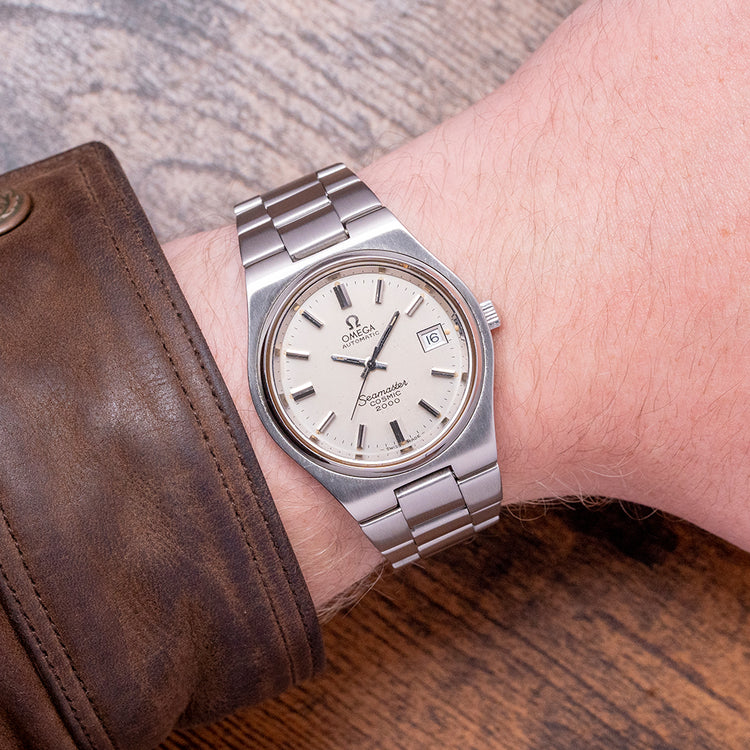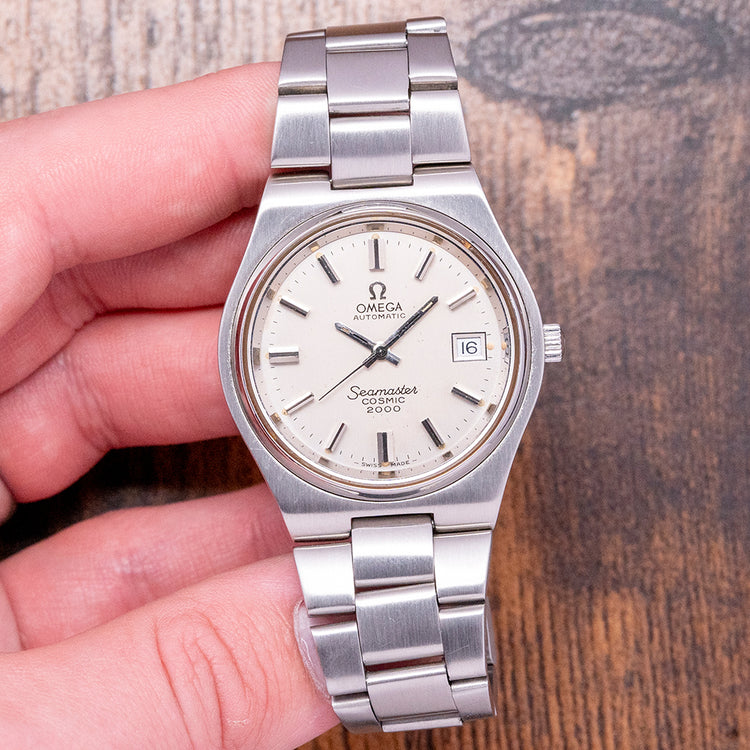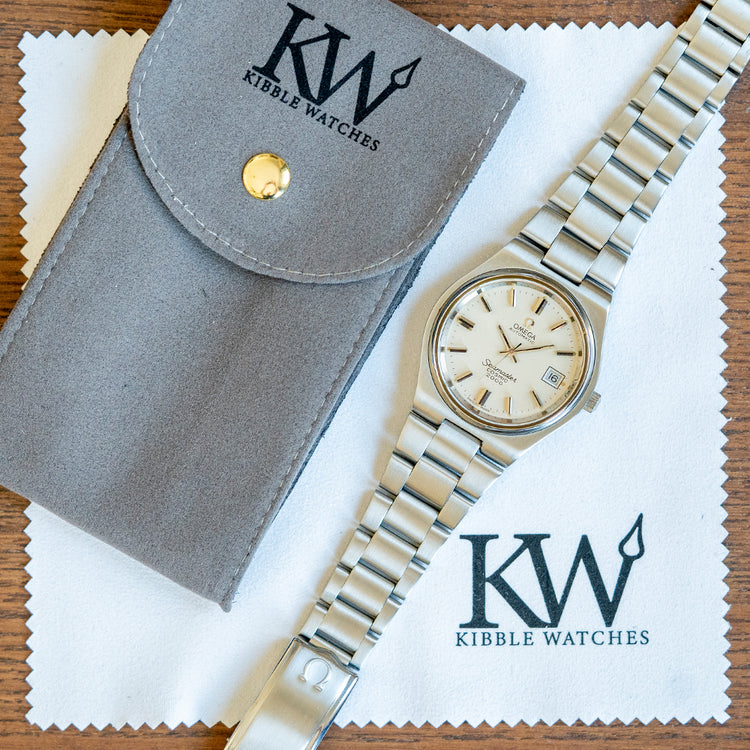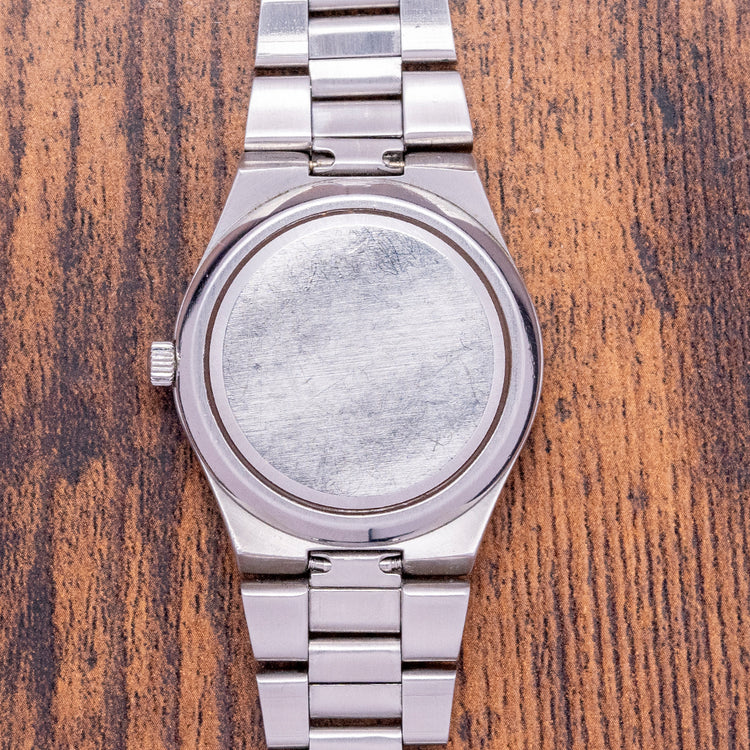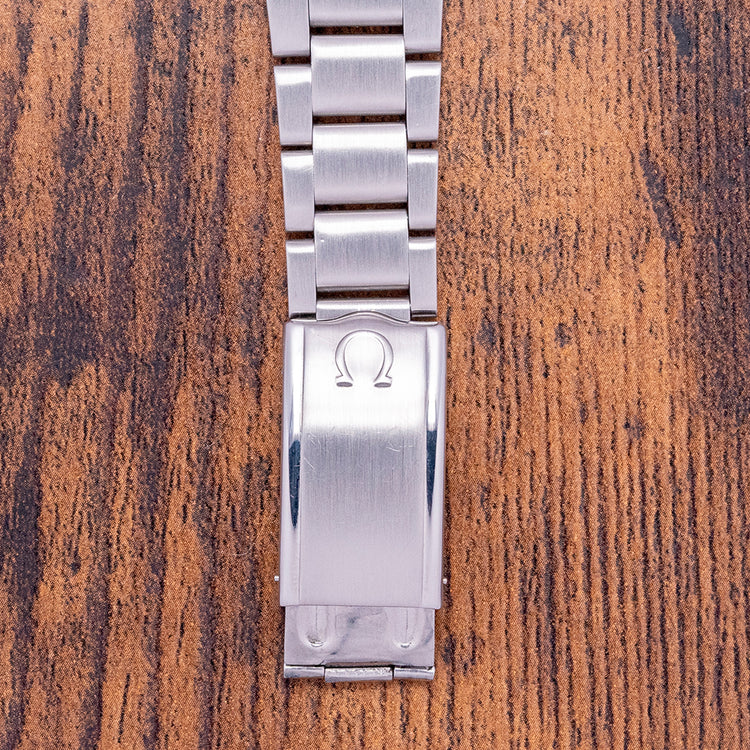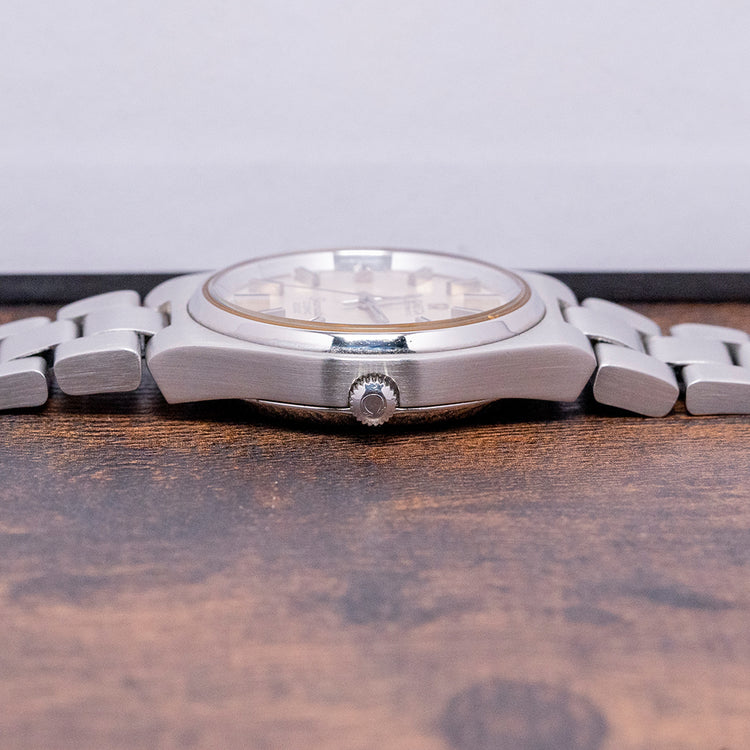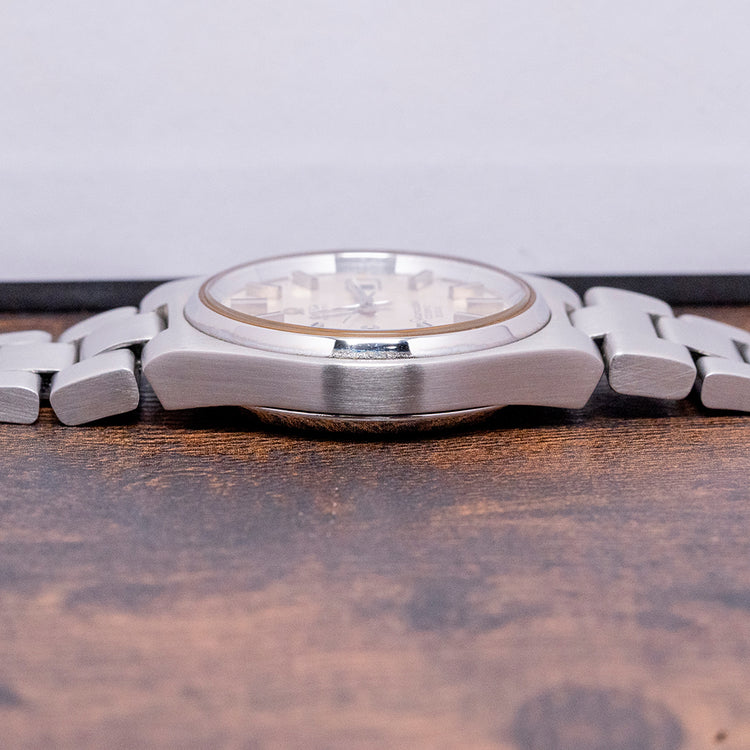More Information
Description
More
Less
Here we have a classic 1974 Omega Seamaster Cosmic 2000 Automatic 166.135. The Seamaster Cosmic was introduced in 1967, jumping on the hype for space travel and everything space-related. The continued relationship with NASA only strengthened Omega’s position as the preferred manufacturer. It generated new life in the Seamaster range. The production run was for less than a decade. In 1972, Omega introduced the Seamaster Cosmic 2000. A gently curved 38 mm cushion-shaped stainless steel case, the brushed case is monocoque (coque in French means hull) in design; its movement is housed in a container holding the mineral crystal, fitted in a synthetic sleeve that's joined to the upper case. To remove the movement, a special tool and high-pressure air is needed. A number of gaskets provided the watch with water resistance, which many of the non-diving Seamasters lacked. On the right side, a signed crown. The flat crystal sits above a sunburst silver dial, an outer minute track surrounds applied facet-edged baton indexes with lume pips marking the hours, at 3 o’clock, a framed day/date window. Slim steel sword hands are complemented with a tapered centre sweeping seconds hand. At noon, we have the Omega motif “Automatic” printed underneath and “Seamaster Cosmic 2000” printed at 6 o’clock”. On the reverse, an etched hippocampus, inside an automatic Omega Cal. 1012, 23 jewels, 28,800 beats per hour. The watch comes paired with its original 23mm Omega integrated 3-link stainless steel bracelet with a signed folding clasp and will fit up to a 7.35-inch wrist.
Points of Mention
More
Less
Personal Note
More
Less
Specification
More
Less
Movement : Automatic Omega Cal. 1012
Age : Circa. 1974
Year : 1974
Case Size : 38mm
Case Thickness : 10mm
Lug to Lug : 43mm
Lugs : 23mm (Integrated)
Condition : Pre-Owned
Box and Papers : None
Case Material : Stainless Steel
Warranty : 12-Months NON-Waterproof Warranty
The wrist model's wrist size is 7inch
About Omega
More
Less
Description
Here we have a classic 1974 Omega Seamaster Cosmic 2000 Automatic 166.135. The Seamaster Cosmic was introduced in 1967, jumping on the hype for space travel and everything space-related. The continued relationship with NASA only strengthened Omega’s position as the preferred manufacturer. It generated new life in the Seamaster range. The production run was for less than a decade. In 1972, Omega introduced the Seamaster Cosmic 2000. A gently curved 38 mm cushion-shaped stainless steel case, the brushed case is monocoque (coque in French means hull) in design; its movement is housed in a container holding the mineral crystal, fitted in a synthetic sleeve that's joined to the upper case. To remove the movement, a special tool and high-pressure air is needed. A number of gaskets provided the watch with water resistance, which many of the non-diving Seamasters lacked. On the right side, a signed crown. The flat crystal sits above a sunburst silver dial, an outer minute track surrounds applied facet-edged baton indexes with lume pips marking the hours, at 3 o’clock, a framed day/date window. Slim steel sword hands are complemented with a tapered centre sweeping seconds hand. At noon, we have the Omega motif “Automatic” printed underneath and “Seamaster Cosmic 2000” printed at 6 o’clock”. On the reverse, an etched hippocampus, inside an automatic Omega Cal. 1012, 23 jewels, 28,800 beats per hour. The watch comes paired with its original 23mm Omega integrated 3-link stainless steel bracelet with a signed folding clasp and will fit up to a 7.35-inch wrist.
Points of Mention
Personal Note
Specification
The Brand
Enquire or Book an Appointment
Would you like to discover further details about this watch, or perhaps arrange an appointment to view and try it on? Complete this form and a member of our team will get back to you shortly.
You May Also Like





















